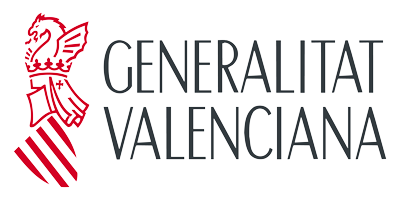Invited seminarAuthor: Prof. Tae-Woo Lee
Affiliation: Research Institute of Advanced Materials, School of Chemical and Biological Engineering, Republic of Korea
When: Friday, March 1, 2024 - 11:00 to 13:00Where: Saló d'Actes, Escuela Superior de Tecnología TD0301CC
Presented by: Prof. Iván Mora-Seró
Abstract:
Metal halide perovskites (MHPs) has attracted great attention as a promising light emitter for next-generation display application because of their high color purity (FWHM ~ 20 nm) and low process cost. Although a lot of strategies have been reported, electroluminescence efficiency and stability of MHP still lag behind existing light-emitting diodes (LED). In this talk, advantages and strategies for commercialization of MHP will be delivered.
First, for high electroluminescence efficiency, we reported a comprehensive material strategy for suppression of defect formation in colloidal perovskite nanocrystal (PNC). Doping of guanidinium (GA+) into formamidinium lead bromide (FAPbBr3) PNCs leads to smaller PNCs with more carrier confinement.[1] Furthermore, a PNCs surface-stabilizing bromine-based small molecule, 1,3,5-tris(bromomethyl)-2,4,6-triethylbenzene (TBTB), was applied as a halide vacancy healing agent.[1] In addition, for large-area applications, we developed a modified-bar coating method to fabricate large-area devices which have similar high efficiency to that of small-area devices made by the spin-coating method.[2] Lastly, we report simultaneously efficient, bright, and stable perovskite LEDs by developing an in-situ core/shell PNC structure. By splitting large 3D crystals into nanocrystals and surrounding them with small organic ligands, significant improvement in both efficiency and lifetime could be achieved with both excellent charge transport and charge confinement.[3]
1. Y.-H. Kim et al., Nat. Photonics, 15, 148–155 (2021)
2. Y.-H. Kim et al., Nat. Nanotechnol., 17, 590–597 (2022)
3. J. S. Kim et al., Nature, 611, 688–694 (2022)
Biography:
Tae-Woo Lee is a professor in the Department of Materials Science and Engineering at Seoul National University, Korea. He received his Ph.D. in Chemical Engineering from Korea Advanced Institute of Science and Technology (KAIST), Korea, in 2002. He joined Bell Laboratories, Lucent Technologies, USA, as a postdoctoral researcher in 2002 and then worked at Samsung Advanced Institute of Technology as a member of the research staff (2003–2008). He was an assistant and associate professor in the Department of Materials Science and Engineering at Pohang University of Science and Technology (POSTECH), Korea, until August 2016. He received Merck Award in 2006, a prestigious Korea Young Scientist Award from the President of Korea in 2008, the Scientist of the Month Award from the ministry of science, ICT and future planning in 2013, Research Innovation Award from Ministry of Science and ICT (Minister’s Award) of Korea in 2018, Korean Engineering Award (Presidential Award) in 2021, Commendation from the Ministry of Trade, Industry and Energy of Korea (Minister’s Award) in 2021, and Kyung-Ahm Prize in 2023. He is appointed as a regular member of Korea Academy of Science and Technology in 2021. He was honored as 2020 Materials Research Society (MRS) Fellow and 2024 SPIE Fellow. He is author and co-author of 280 papers in high-impact journals including Science, Nature, Nature Photonics, Nature Nanotechnology, Nature Biomedical Engineering, Science Advances, Nature Communications, Joule, PNAS, Energy and Environmental Science, and Advanced Materials. He is also the inventor or co-inventor of 423 patented technologies. He currently serves as an editorial board member on the Journals such as Advanced Materials (Wiley), FlatChem (Elsevier), EcoMat (Wiley), Chem & Bio Engineering (ACS), Materials Today Electronics (Elsevier), Nano Convergence (Springer), and Semiconductor Science and Technology (IOP), and as an associate editor in Organic Electronics (Elsevier). His research focuses on organic, organic–inorganic hybrid perovskite, and carbon materials, and their applications to flexible electronics, printed electronics, displays, solid-state lightings, solar energy conversion devices, and bioinspired neuromorphic devices.






